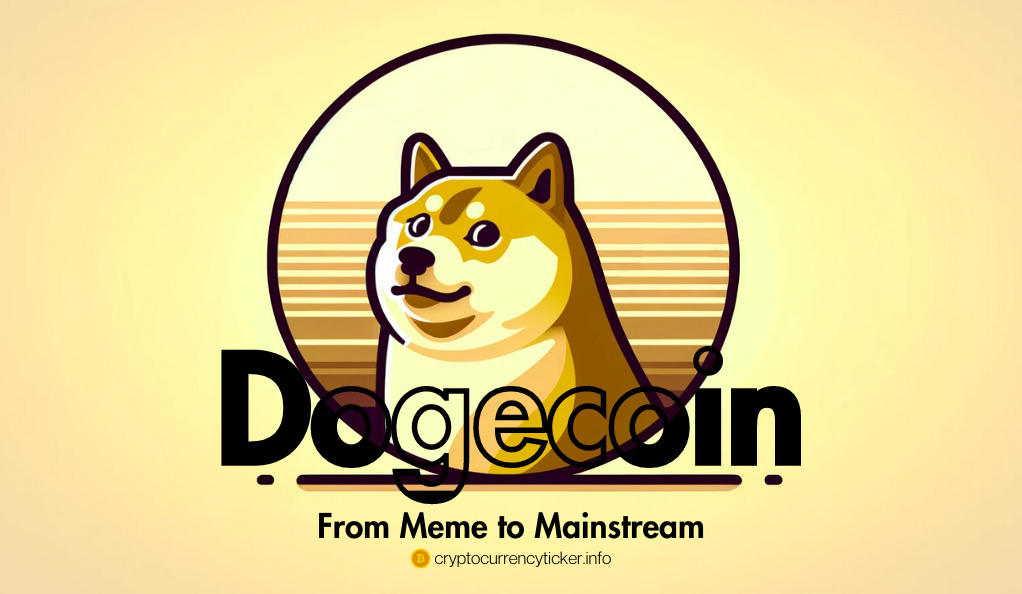In the last decade, the world of finance has witnessed a revolution led by the emergence of cryptocurrencies, a form of digital or virtual currency. The concept of cryptocurrency is intriguing yet complex, and its evolution marks a significant shift in how we perceive and interact with money.
What are Cryptocurrencies?
Cryptocurrencies are digital assets designed to work as a medium of exchange, utilizing cryptography to secure transactions, control the creation of additional units, and verify the transfer of assets. Unlike traditional currencies, they are decentralized and typically operate on a technology known as blockchain – a distributed ledger enforced by a disparate network of computers. This technology ensures transparency, security, and immutability of transactions.
The Historical Context and Rise of Digital Currencies
The idea of digital money predates the first real cryptocurrency, Bitcoin, which was introduced in 2009 by an anonymous entity known as Satoshi Nakamoto. Bitcoin’s inception was a response to the financial crisis of 2008, offering a vision of an alternative financial system free from central bank control. The core idea was to enable direct transactions between two parties without the need for an intermediary like a bank, thereby reducing transaction costs and increasing efficiency.
The Growth and Diversity of Cryptocurrencies
Since the launch of Bitcoin, the cryptocurrency landscape has expanded dramatically, with thousands of alternative cryptocurrencies, often referred to as “altcoins,” emerging. These range from direct derivatives of Bitcoin, like Litecoin, to entirely new frameworks like Ethereum, which introduced the concept of smart contracts and decentralized applications (DApps). The variety of cryptocurrencies serves different purposes, from digital cash systems to platforms for decentralized finance (DeFi) and more.
Blockchain: The Underlying Technology
At the heart of most cryptocurrencies is blockchain technology. A blockchain is essentially a continuously growing list of records, called blocks, which are linked and secured using cryptography. Each block typically contains a cryptographic hash of the previous block, a timestamp, and transaction data. This design makes blockchains inherently resistant to data modification: once recorded, the data in any given block cannot be altered retroactively without altering all subsequent blocks.
Decentralization: A Key Feature
A defining characteristic of cryptocurrencies is their decentralized nature. This means they are not controlled by any single authority, such as a government or financial institution. Instead, the maintenance and operation of the blockchain are carried out by a network of nodes, making cryptocurrencies more resistant to censorship and centralized control.
Understanding Bitcoin: The First Cryptocurrency
Bitcoin, introduced in 2009 by the pseudonymous Satoshi Nakamoto, is the pioneer of cryptocurrencies and remains the most well-known and valuable digital asset. It revolutionized the concept of money and financial transactions in several ways:
1. Digital Gold: Often referred to as “digital gold,” Bitcoin is considered a store of value akin to gold. Its limited supply of 21 million coins and decentralized nature make it an attractive asset for long-term investment.
2. Peer-to-Peer Transactions: Bitcoin enables peer-to-peer transactions without the need for intermediaries like banks. It allows users to send and receive funds globally quickly and with minimal fees.
3. Decentralization: The Bitcoin network operates on a decentralized ledger, meaning no central authority controls it. Transactions are verified by a network of nodes, ensuring transparency and security.
4. Mining: New Bitcoins are created through a process called mining, where miners solve complex mathematical puzzles to validate transactions and add them to the blockchain. This process also secures the network.
5. Investment: Bitcoin’s price volatility has attracted investors seeking both short-term gains and long-term wealth preservation. It has become an asset class in its own right.
6. Evolution: Over the years, Bitcoin has witnessed various technological upgrades, such as the adoption of the Lightning Network for faster and cheaper transactions.
7. Impact: Bitcoin has had a significant impact on the financial industry, sparking discussions about the future of money and the potential to disrupt traditional banking systems.
As the first cryptocurrency, Bitcoin laid the foundation for the entire crypto ecosystem. It continues to influence the development and adoption of digital currencies, making it a cornerstone of the cryptocurrency world.
Ethereum: More Than a Currency

While Bitcoin paved the way for cryptocurrencies, Ethereum took the concept further by introducing smart contracts and decentralized applications (DApps). Here’s what sets Ethereum apart:
1. Smart Contracts: Ethereum’s blockchain allows developers to create and deploy smart contracts, self-executing contracts with predefined rules. These contracts automate complex tasks, enabling decentralized agreements, token issuance, and more.
2. Decentralized Applications (DApps): Ethereum’s platform hosts a vast ecosystem of DApps. These range from decentralized finance (DeFi) platforms for lending and trading to non-fungible token (NFT) marketplaces and gaming applications.
3. Ether (ETH): Ethereum’s native cryptocurrency, Ether, is used to pay for transactions and computational services on the network. It’s also an investment asset, like Bitcoin.
4. Ethereum 2.0: Ethereum is transitioning to Ethereum 2.0, an upgrade that aims to improve scalability and energy efficiency. This upgrade will replace the current proof-of-work (PoW) consensus mechanism with proof-of-stake (PoS).
5. DeFi Revolution: Ethereum has been instrumental in the DeFi boom, offering users opportunities for lending, borrowing, yield farming, and more. It has transformed traditional financial services.
6. NFTs: Ethereum-based NFTs have gained immense popularity, enabling the ownership and trading of unique digital assets, including art, collectibles, and virtual real estate.
7. Innovation Hub: Ethereum’s open-source nature has led to a vibrant developer community, fostering innovation and experimentation in the blockchain space.
Cardano: A Technologically Advanced Option
Cardano, launched in 2017, is known for its commitment to technological advancement and innovation in the blockchain space. Here are key aspects that set Cardano apart:
- Proof of Stake (PoS): Cardano employs a PoS consensus mechanism called Ouroboros, which is energy-efficient and scalable, addressing some of the environmental concerns associated with PoW cryptocurrencies.
- Layered Architecture: Cardano’s blockchain operates on a layered architecture, separating the settlement layer (where ADA transactions occur) from the computation layer (where smart contracts are executed). This design enhances scalability and security.
- Sustainability: Cardano focuses on sustainability and inclusivity, aiming to provide financial services to underserved populations globally through blockchain technology.
- Research-Driven Approach: Cardano places a strong emphasis on peer-reviewed academic research, ensuring that its protocols and innovations are rigorously tested and verified.
- Governance and Treasury System: Cardano has a decentralized governance model that allows ADA holders to propose and vote on network upgrades. It also includes a treasury system for funding development and initiatives.
- Interoperability: Cardano aims to facilitate interoperability between different blockchains, fostering a more interconnected and versatile blockchain ecosystem.
Dogecoin: From Meme to Mainstream

Dogecoin, initially created as a lighthearted meme, has evolved into a notable cryptocurrency. Key aspects of Dogecoin include:
- Meme Origins: Dogecoin’s mascot, the Shiba Inu dog, was originally a meme. Its lighthearted and friendly image contributed to its popularity.
- Community and Tipping Culture: Dogecoin gained a strong and generous community that often used it for tipping content creators on social media platforms.
- Inflationary Model: Unlike Bitcoin, Dogecoin has no maximum supply limit. It initially had a fixed annual supply increase of 5.2 billion coins, which has now been reduced.
- High Liquidity: Dogecoin is widely traded on various cryptocurrency exchanges, providing high liquidity for users.
- Celebrity Endorsements: High-profile endorsements by figures like Elon Musk and Mark Cuban have boosted Dogecoin’s visibility.
- Volatility: Dogecoin’s price is known for its volatility, making it a speculative asset.
Hedera: The Corporate-Friendly Cryptocurrency
Hedera Hashgraph, often referred to as Hedera, stands out in the cryptocurrency landscape for its focus on providing a platform tailored for corporate use and enterprise applications. Key features of Hedera include:
- Asynchronous Byzantine Fault Tolerance (aBFT): Hedera’s consensus mechanism offers high levels of security and efficiency, making it suitable for corporate applications.
- Low Transaction Fees: Hedera offers low-cost transactions, making it an attractive choice for businesses looking to implement blockchain technology.
- Decentralization: Hedera operates with a decentralized network of nodes, ensuring trust and transparency in transactions.
- Diverse Use Cases: Hedera is versatile, with applications spanning from supply chain management and tokenization to decentralized finance (DeFi) and data integrity.
- Stability: The platform has maintained stability in its performance, making it reliable for enterprise solutions.
- Partnerships: Hedera has formed partnerships with various enterprises, including Google, IBM, and LG, to explore and implement blockchain solutions.
Monero: The Privacy-First Cryptocurrency

Monero is a cryptocurrency that places a strong emphasis on privacy and anonymity. Key characteristics of Monero include:
- Privacy Features: Monero uses advanced cryptographic techniques to obfuscate transaction details, making it nearly impossible to trace the sender, recipient, or transaction amount.
- Fungibility: Monero is designed to be fungible, meaning each unit of the currency is interchangeable with another. This ensures that all coins are equal, regardless of their transaction history.
- Decentralization: Monero operates on a decentralized network of nodes, similar to Bitcoin, ensuring censorship resistance and security.
- Ring Signatures and Stealth Addresses: These technologies enhance privacy by mixing multiple transactions together and creating one-time addresses for recipients.
- Darknet Usage: Monero’s privacy features have led to its use on darknet markets, although it is important to note that not all Monero transactions are illicit.
- Security Focus: Monero’s commitment to privacy extends to its development, with a focus on security and constant improvement.
Exploring Lesser-Known Cryptocurrencies
Beyond the well-known cryptocurrencies like Bitcoin and Ethereum, there exists a diverse array of lesser-known digital assets, each with its own unique features and potential. Let’s briefly introduce a few of these:
XRP: XRP, associated with Ripple, aims to facilitate fast and low-cost cross-border payments for financial institutions.
Algorand (ALGO): Algorand focuses on speed, scalability, and security in blockchain transactions, though adoption remains a challenge.
Avalanche (AVAX): With its three-blockchain architecture, Avalanche offers a platform for creating and transacting crypto assets, making it a rising star in the crypto world.
The Role of Stablecoins in the Crypto Ecosystem
Stablecoins play a pivotal role in the cryptocurrency ecosystem, offering stability in a realm known for price volatility. Key points about stablecoins include:
- Backing: Stablecoins are typically backed by real-world assets, like fiat currency (e.g., US dollars), making them less susceptible to price fluctuations.
- Low-Cost Transactions: They provide a cost-effective way to move between cryptocurrencies and traditional currencies.
- Tether (USDT): Tether is one of the most widely used stablecoins, often used as a bridge between crypto and traditional financial markets.
- Yield Farming: Stablecoins are integral to DeFi platforms, enabling users to earn yields through lending and liquidity provision.
- Staking Rewards: Some stablecoins offer staking opportunities, allowing users to earn passive income.
Conclusion
In this comprehensive overview, we’ve journeyed through the fascinating world of cryptocurrencies. From the groundbreaking introduction of Bitcoin to the smart contract capabilities of Ethereum, the corporate focus of Cardano, the meme-driven rise of Dogecoin, the enterprise-oriented Hedera, the privacy-centric Monero, and lesser-known cryptocurrencies like XRP, Algorand, and Avalanche, we’ve explored the rich diversity within the crypto ecosystem.
Additionally, we’ve discussed the essential role of stablecoins in providing stability amid the volatility of crypto markets. As the cryptocurrency landscape continues to evolve, it offers both exciting opportunities and challenges, making it a space worth watching and participating in for those interested in the future of finance and technology.
